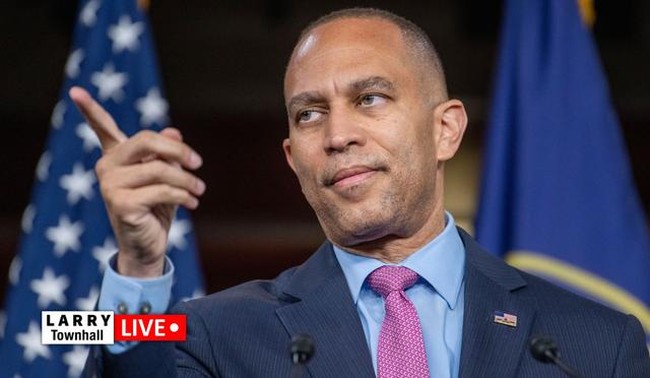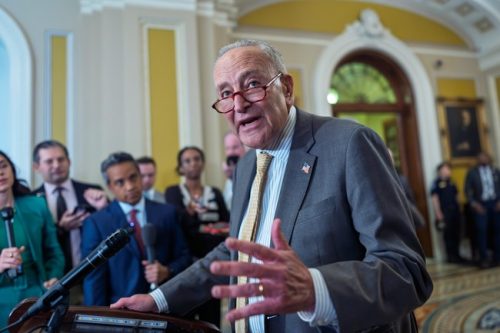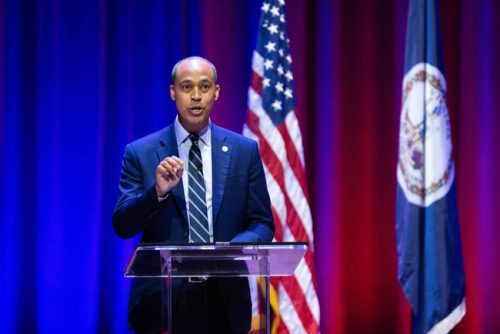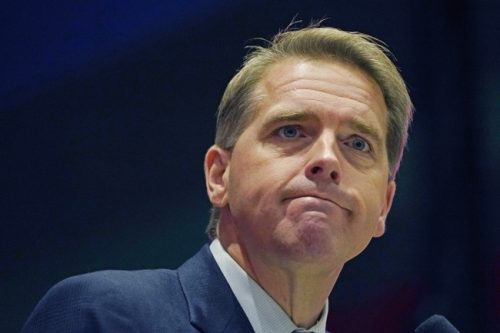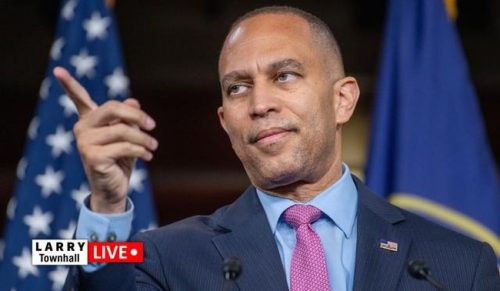This piece summarizes a fiery episode of LARRY where House Democrat leader Hakeem Jeffries faced tough questions on CNBC over the government shutdown, Illinois Governor JB Pritzker landed in hot water during a Bret Baier interview, Bernie Sanders reportedly cut ALL TIES with his radical Democrat friends, and other political flashpoints got brisk, no-nonsense scrutiny from a Republican perspective.
Early in the show the focus landed on Hakeem Jeffries and his CNBC appearance, where anchors pressed him on the fallout from the government shutdown. Viewers watched as Jeffries tried to navigate questions about responsibility, messaging, and strategy. From a Republican angle, the encounter looked like accountability finally catching up to Democratic leadership.
The shutdown itself is framed as a test of priorities, and Republicans argue the questions Jeffries faced were perfectly fair. When policy choices lead to unpaid bills or furloughed workers, the public deserves direct answers. That is exactly what happened on live television, with anchors refusing to let vague talking points slide.
Another segment turned to JB Pritzker and his exchange with Bret Baier, which put the Illinois governor on the defensive. Pritzker’s handling of state matters and political messaging drew sharp lines of questioning that exposed inconsistencies. Conservatives said the interview highlighted how Democratic governors dodge straightforward accountability when results are lacking.
The Pritzker moment underscored a broader theme: when leaders evade specifics, the media will push back and voters will notice. Republican commentators on the show argued that tone-deaf responses cost credibility. That idea resonated with viewers who want results, not spin.
A surprising turn came with coverage of Bernie Sanders cutting ALL TIES with his radical Democrat friends, a line that raised eyebrows across the political spectrum. The episode flagged factional rifts inside the left and suggested some figures are recalibrating to survive politically. Republicans see this as proof that the Democratic coalition is fracturing under pressure and conflicting priorities.
The narrative about Sanders was used to signal deeper divisions within the party, where ideological purity runs headlong into practical governance. On-air analysts debated whether this split will blunt the left’s influence or merely reshuffle its personalities. From a conservative view, the fractures open space for Republicans to press their message on unity and competence.
Beyond the headline names, the program threaded in examples of what Republicans call liberal overreach and the consequences that follow. The show highlighted regulatory tangles, budget decisions, and cultural disputes as part of a pattern of misplaced priorities. That strand fit the episode’s tone: hold officials accountable and highlight real impacts on everyday Americans.
On the subject of media coverage, LARRY emphasized a contrast between soft interviews and hard-nosed questioning like what viewers saw on CNBC and Fox News. The hosts praised moments when journalists didn’t accept evasive answers. Republicans on the program argued that tougher journalism helps restore political responsibility.
The episode also examined messaging missteps by Democrats and how those missteps become political liabilities. When opponents are quick to capitalize, the story shifts from policy detail to who looks competent. The show made clear that competence and clarity matter in political survival.
Throughout the discussion, panelists returned to accountability as a central theme, insisting that voters deserve clarity on priorities and consequences. Whether talking about federal shutdowns or state governance, the underpinning argument was the same: leaders must answer for outcomes. Republicans on the show stressed that transparency and direct answers cut through partisan spin.
Fact-driven analysis of each incident kept the tone brisk and pointed, avoiding sentimental detours in favor of direct scrutiny. The coverage didn’t shy away from naming problems and pressing for explanations. That approach matched the conservative instinct to focus on results rather than rhetoric.
Viewers were reminded that political theater only lasts so long; policy effects are what stick with people. Job security, economic stability, and effective government services are the issues that define public judgment. The show framed these practical concerns as the real battleground, where Republican critiques aim to persuade undecided voters.
By spotlighting each controversy and the media exchanges around them, the episode painted a picture of a Democratic party under pressure. Whether convincing moderate voters or shoring up the conservative base, the talking points were consistent: demand accountability, push for competence, and expose mixed messaging. That combination made the show feel like a focused Republican briefing on recent political weak spots.
The final segments rounded back to the idea that public accountability matters more than insider narratives and partisan talking points. LARRY made the case that when leaders are pressed in public, voters get clearer answers. For conservatives, that clarity is a chance to hold officials to account and to make their case on policy and leadership.

